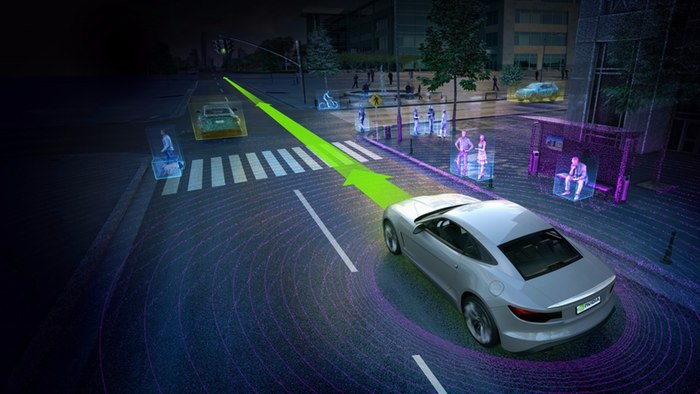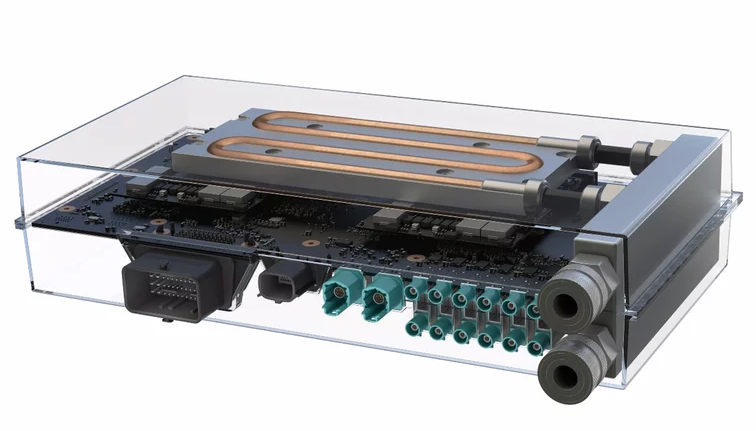At CES 2016, visual computing company Nvidia announced the successor to last year’s Drive PX in-car computer: the Drive PX 2. Designed to allow vehicles to accurately sense their surroundings while navigating autonomously, this computer is liquid-cooled and sports 12 CPU cores and eight teraflops of processing power.
Equipped with the latest of Nvidia’s GPU technology, the computer is able to provide autonomous vehicles with 360° situational awareness. According to the company, in terms of raw power, it’s about equivalent to 150 MacBook Pros. Nvidia feels that the level of power provided by the new computer will be necessary if self-driving cars ever become mainstream.

The Drive PX 2 can provide autonomous vehicles with 360° situational awareness. Image source: Nvidia.
Because autonomous vehicles use an array of sensors, the Drive PX 2 is able to process information from a range of sources. For example, it can handle inputs from 12 video cameras, ultrasonic sensors, and radar and LiDAR. Once that combined data is analyzed by Nvidia’s DriveWorks software tool set, the vehicle is able to picture the atmosphere around it, determine its position, and plot the safest route possible by pinpointing obstacles.
The computer itself is made up of two Tegra CPUs that are paired with two discrete GPUs based on the company’s Pascal architecture, providing eight teraflops of processing power, allowing for up to 24 trillion deep learning operations per second.

An inside look at the Drive PX 2. Image source: Nvidia.
According to the company, its deep learning system is better at addressing certain issues than traditional computer vision techniques. Specifically, it’s more capable of identifying and dealing with difficult lighting scenarios, such as sunrise and sunset, and weather conditions such as snow or rain.

Nvidia at CES 2016. Image taken by Max Teodorescu of Electronic Products.
The Drive PX 2 will be tested out by Volvo, who will use it in a fleet of 100 XC90 SUVs, which are scheduled to hit the road next year.
Source: Nvidia
Advertisement
Learn more about Electronic Products Magazine





